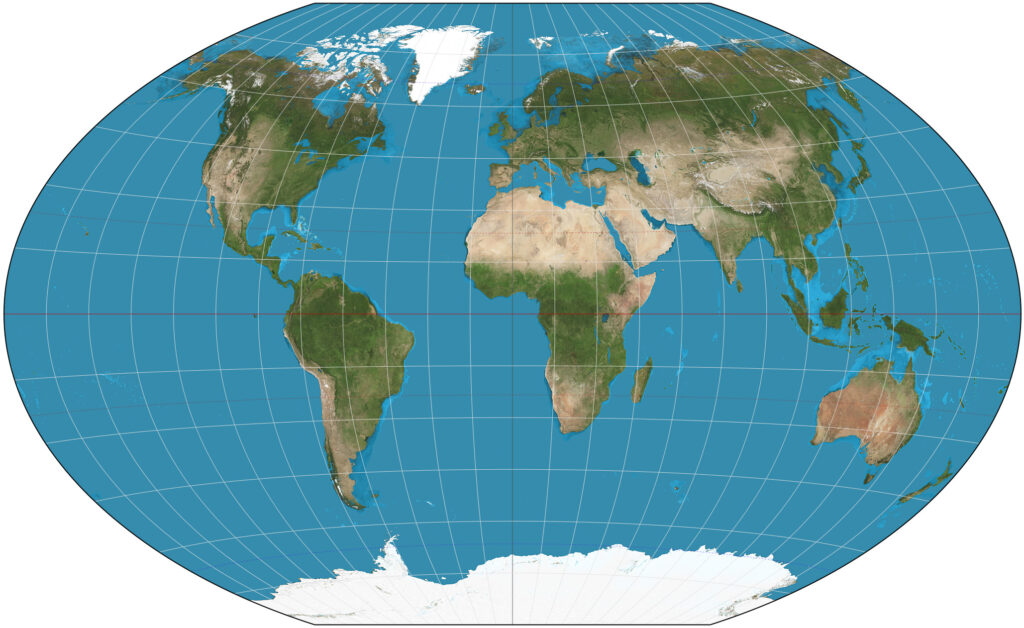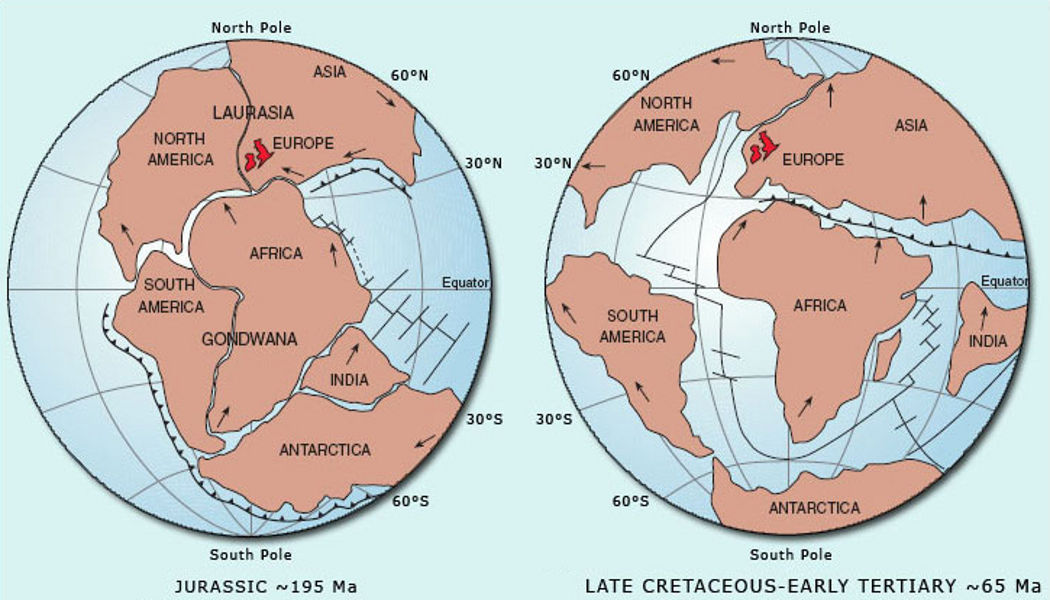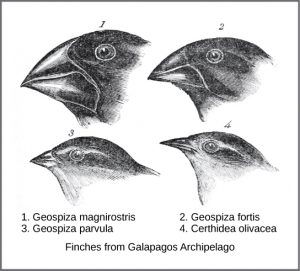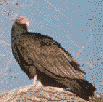
Biogeography is the study of the distribution of species and ecosystems in geographic space and through (geological) time. Organisms and biological communities often vary in a regular fashion along geographic gradients of latitude, elevation, isolation and habitat area.
Birds are found all over the earth’s surface and in nearly every environment. There are some groups that are cosmopolitan (worldwide distribution): shorebirds, waterfowl, swallows, and the crows, jays, and ravens. But in spite of birds’ ability to fly and distribute themselves so easily, they are curiously limited in their ranges as a class. Why, for instance, are the avifaunas of England and Japan more alike than those of Africa and Madagascar? Why does SA have over 300 species of hummingbirds and Africa none? Why does NA turkey occur nowhere else? The Atitlan Grebe occurs in Lake Atitlan in Guatemala only; Kirtland’s Warbler is found only in north central Michigan, and the Ipswich Sparrow only on Sable Island, Nova Scotia. In the New World there are 63 wren species; in the Old World only one. In the Old World there are 75 species of larks; in the New World only one. The explanation comes from evolution, ecology, and geology.
The vast majority of birds live on only 29% of the earth’s surface – the land. Only about 290 species of birds are mainly marine. On the land there is a diversity of habitats, terrain, vegetation, and weather. The poles are very extreme habitats where birds are rarely seen. In general, there are more species at latitudes closer to the equator.
Different continental land masses contain different avifaunas divided by geographical features. For example, in Asia no parrots live north of the Himalayan Mountains, but they are common south of them. The sharpest change between North and South American avifaunas is at the northernmost limit of the tropics in Mexico. African and Asian avifauna are separated more by the Sahara desert than by the Mediterranean Sea.
Wallace, in 1876, proposed 6 major zoogeographical regions to explain the distribution of faunal groups. The Palearctic region is the largest and probably is the origin of all birds. It includes Europe, Africa north of the Sahara, and all of Asia except its southern extensions. It is relatively poor in bird variety due to its cold climate. The great majority of birds are migratory and many are insectivorous. There are 1064 species, 55% passerines. One family, Prunellidae, the hedge sparrows, is endemic. This region and the next, the Nearctic, are together called the Holarctic and share four endemic groups: Gaviidae, Tetraoninae, Alcidae, and Bombycillidae.
The Nearctic region or realm includes North America north of the tropics and Greenland. It has 750 breeding species and is relatively poor in avian variety. The Wrentit (Timaliinae) is endemic.
The Neotropical region includes SA. Central America, and the West Indies. About 70% of the land mass id low, wet, and tropical. There is very little temperate or desert area. Richest avifauna of the world. Over 2780 species breed here. 31 families are endemic- over twice that of any other region: e.g.. rheas, tinamous, currasows, toucans.
The Afrotropical region is composed of Africa south of the Sahara, southern Arabia, and Madagascar. Africa receives only about half as much rain as SA, so grasslands and deserts compose a much larger portion of the area. There are about 1556 breeding species and 6 endemic families. Some endemic groups are: ostriches, sunbirds, secretary birds, guineafowl, and mousebirds.
The Indomalayan realm includes India, Burma, Indo-China, Malaya, Sumatra, Java, Borneo, and the Phillipines. The Himalayas form a barrier between the Palearctic and Oriental regions. Climate is tropical to subtropical. About 961 breeding species; one endemic family – Irenidae – the leafbirds and fairy bluebirds. Also characteristic are Phasianidae, pittas, babblers, and flowerpeckers.
The Australasian region The Australasian realm is a biogeographic realm that is coincident, but not synonymous (by some definitions), with the geographical region of Australasia. The realm includes Australia, the island of New Guinea (including Papua New Guinea and the Indonesian province of Papua), and the eastern part of the Indonesian archipelago, including the island of Sulawesi, the Moluccan islands (the Indonesian provinces of Maluku and North Maluku) and islands of Lombok, Sumbawa, Sumba, Flores, and Timor, often known as the Lesser Sundas.906 species breed there (531 in Australia) and there are 13 endemic families – emus, cassowaries, kiwis, kagu, cockatoos, birds-of-paradise, and honey-eaters, e.g. (Australia is 70% desert and scrub and in this 70% there are only 17 species!).

The continents were one large land mass until about 200 million years ago when continental drift began to separate them. By the time birds evolved about 150-160 million years ago, they were separated. And as the world’s climate and geography changed, birds evolved into different habitats. Some new species arose and others disappeared (a species lasted about 25,000 years). Speciation in birds, like other animals, is primarily due to geographic isolation.
How do they get separated? Birds disperse due to normal migration and population pressure. Some find new habitats (maybe get lost) and if the habitat is suitable, become different genetic strains than their parents – a new species.
Lots of “accidental” colonizations have occurred. E.g. in January of 1937 a flock of Fieldfares was blown of course by a storm from Northern Europe to Greenland and are now established there.
The chances of a small bird colonizing a distant, isolated area are small, but given a long enough time, a lot of colonizations can occur. 15 species of birds invaded Hawaii since it arose from volcanic action 5 million years ago – this is about 1 colonization/333,333 years!
The Galapagos Islands arose 600 miles off the coast of Ecuador and have dozens of endemic bird species – mockingbird, flightless cormorant, owl, and Penguin. There are also 2 endemic mammals, and 5 species of reptiles. But certainly the most famous organisms are Darwin’s Finches. In 1835, Darwin discovered the finches on these volcanic islands that were never in contact with the mainland. The finches, as well as the other birds and animals, are similar to those on the mainland, but still are different. In addition, there are variations from island to island. There are 13 species of finches on the islands plus one additional species on Cocos Island to the northwest. Up to 10 species of finches occur on one island.

Among the ground finches, four species live together on most of the islands; three eat seeds and differ in bill sizes, adapted to different size seeds. The fourth lives on prickly pear cactus and has a longer and more pointed beak. The other two ground finch species live on outlying islands; one is large beaked and one is small. Of the tree finches, one is mainly vegetarian, the beak slightly modified to eat buds and fruits. Three other species are similar in habits, differing in body and bill size. A fifth tree finch eats insects in mangrove swamps. The sixth, the woodpecker/cactus finch – uses a tool- Darwin never observed this. The close resemblance among Darwin’s finches in plumage, calls, nests, eggs, and display suggests that they have not yet had time to diverge for from one another. The biggest difference is in their beaks. On most of the island, three species of ground finches are found – small, medium, and large, feeding on small, medium, and large seeds. On the two southern islands, the large species is missing and the medium species has a larger bill than elsewhere – an adaptation for getting larger seeds that would be gotten by the large species if present. On another island the small species is absent and the medium species has a smaller bill than elsewhere for the same reason.
This type of evolution (adaptive radiation) occurs in many places, but it is only clearly shown in the Galapagos and Hawaii – the honeycreepers. On the mainland, where the finches’ ancestor came from, this adaptation did not occur because the niches were already filled by other bird species.
Whatever the cause, when birds become geographically isolated, there is a chance that they will also become genetically isolated. Where there is still gene flow between populations, we see differences, but not enough to make new species- we get subspecies or geographic races instead: Canada Goose, House Sparrow, Fox Sparrow, Rufous-sided Towhee. Song Sparrows have different songs in different parts of the U.S. But if enough genetic differences accumulate due to no gene flow (isolation), speciation occurs. E.g. the Savannah Sparrow is found all over the U.S.; a population of it became isolated on Sable Island off Canada and became the Ipswich Sparrow. We can presume that some thrushes probably had a common ancestor:
There are lots of examples of birds that are probably fairly recently evolved species. They are very similar birds and do similar things, but live in different habitats or live in the same habitat and do things enough differently so that they can coexist:
Barred and Spotted Owl
Eastern and Western Meadowlarks
Black and Turkey  Vultures
Vultures
Downy and Hairy Woodpeckers
Greater and Lesser Yellowlegs
Cooper’s and Sharp-shinned Hawks
Red-Tailed Hawk and European Buzzard
Some birds are naturally expanding their ranges- e.g. Cattle Egret, and many have contracted their ranges as the habitat disappears. Others contract and expand as the climate changes – Cardinal, Carolina Wren, Mockingbird.
Humans have introduced birds into many areas. In the U.S. – House Sparrow, Chukar, Ring-necked Pheasant, European Starling, Rock Dove, Monk Parakeet. The House Finch is native to the West but has been introduced in New York. In Hawaii, no native songbirds are left in the lowlands, having been displaced by Japanese White-eyes, Babblers, Cardinals, Weaver Finches, and Mynahs, or eaten by predators (rats, mongooses). More about Biogeography.
Really very usful information.
We are running School of Environment and Nature Conservation in Jalgaon ( Maharashtra State -India ) Recently we have received recognitation from K.N.C. North Maharashtra University for running certificate course : Ornithlogy, Bio-diversity & Forest and Wildlife Conservation. We are willing to get support from you for running these courses effectively .We would be grateful to you if you could cooperate and aupprt us in this regards.
Rjedra Nannaware
Director, School of Environment & Nature Conservation
+91 9823106663
I would be glad to help if I can. What kind of support are you looking for?
Really very usful information.
We are running School of Environment and Nature Conservation in Jalgaon ( Maharashtra State -India ) Recently we have received recognitation from K.N.C. North Maharashtra University for running certificate course : Ornithlogy, Bio-diversity & Forest and Wildlife Conservation. We are willing to get support from you for running these courses effectively .We would be grateful to you if you could cooperate and aupprt us in this regards.